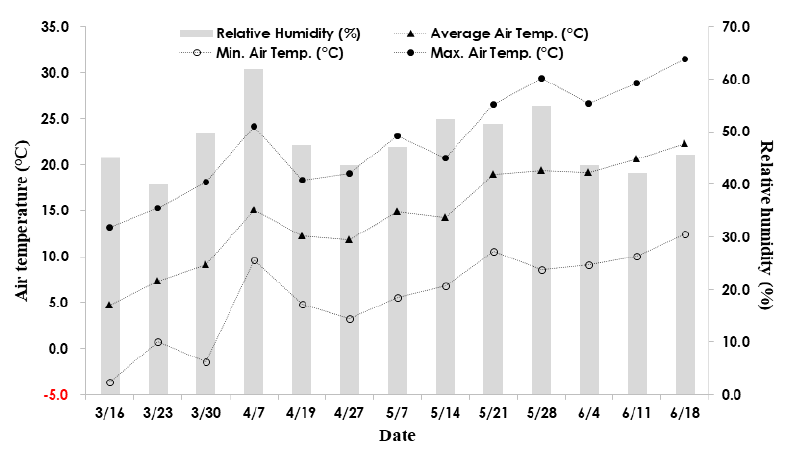Abstract
Kentucky bluegrass (
Figures & Tables

Fig. 1. Maximum, minimum and average air temperature (℃) from March 16, 2017 to June 18, 2017. Relative humidity (%) was measured at the same measurement day as temperature measurement.
Sang-Kook Lee1,*
1Department of Biotechnology, Hoseo University, Asan 31455, Korea
Kentucky bluegrass (

Fig. 1. Maximum, minimum and average air temperature (℃) from March 16, 2017 to June 18, 2017. Relative humidity (%) was measured at the same measurement day as temperature measurement.